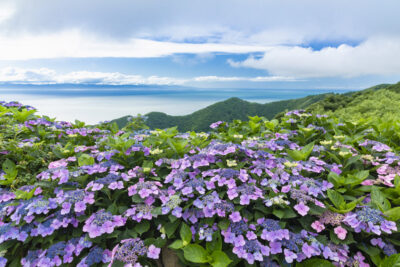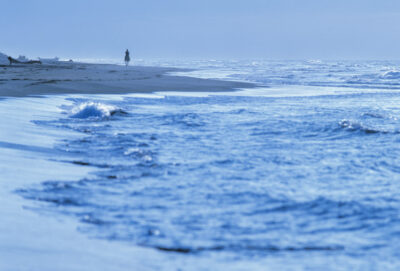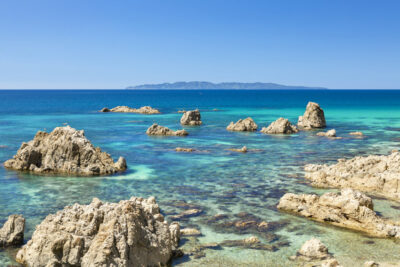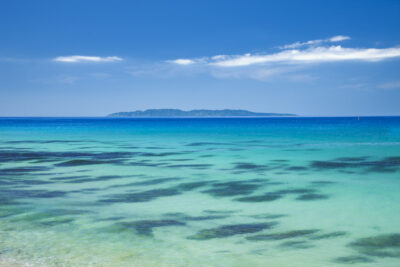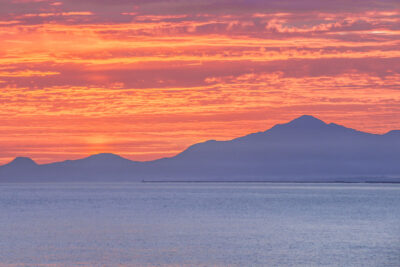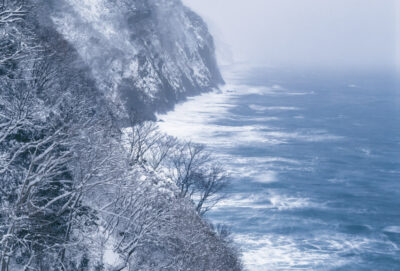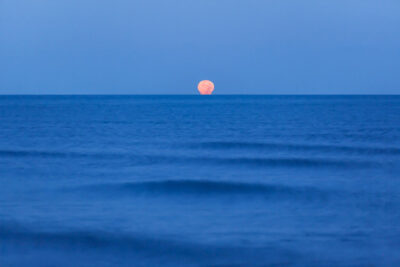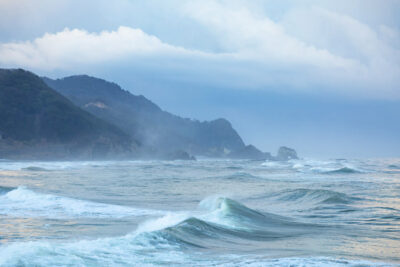
芸術と自然の関係
新潟県には人が住む島が二つあります。一つは佐渡島、もう一つは佐渡よりも約60キロ北東にある粟島です。粟島は小さな島のため、県外の方にはその存在を知らない人も多いかもしれません。笹川流れ海岸から眺めると、海岸の岩場の向こうに見え海の単調さを和らげてくれる面もあります。私が特に好きなこのポイントからの風景は、海に浮かぶ岩がまるで枯山水の庭園を思わせます。自然が先に存在しているにもかかわらず、自然が人の作為を模倣したかのような写真となりました。
アリストテレスは「芸術は自然を模倣する」と述べましたが、自然の中にあるものを芸術家が描いたことで、オスカー・ワイルドは「自然が芸術を模倣する」と逆説的に語りました。私たちはしばしばそのことに気がつかず、絵を描いたり写真を撮ったりしています。旅行先でガイドブックに載っている風景を同じ場所で写真に収めることもあるかと思います。そんな行為によって自然を矮小化して見てしまっていることに気がつきません。何かを表現しようとする時、私でも誰でも、ほかの何かの表現に影響を受けているのを避けることは容易ではありません。そんな時には物の見方にはバイアスがかかるのだということを、忘れないように心に留めておきたいと思います。
There are two inhabited islands in Niigata Prefecture. One is Sado Island, and the other is Awashima, located about 60 km northeast of Sado. Because of its small size, many people outside the prefecture may not know of its existence. Viewed from the Sasakawagare Beach, Awashima looks as if it is shelving over the sea. The view from this point, which I particularly like, is reminiscent of a dry landscape garden with its swirling patterns of rocks and waves. It is as if nature imitated human artifice, even though nature existed first.
Aristotle said that “art imitates nature,” but Oscar Wilde paradoxically said that “nature imitates art” because the artist has depicted what is in nature. Often we paint and photograph without realizing it. When we travel, we often take pictures of landscapes from guidebooks, but in doing so, we sometimes see nature in a trivialized way. When trying to express something, it is inevitable to be influenced by someone else’s expression. It is important to keep in mind that there is always a bias in the way we look at things.
EOS5DMarkⅣ+65mm 15秒 f:22
©️photo by Nakamura Osamu
